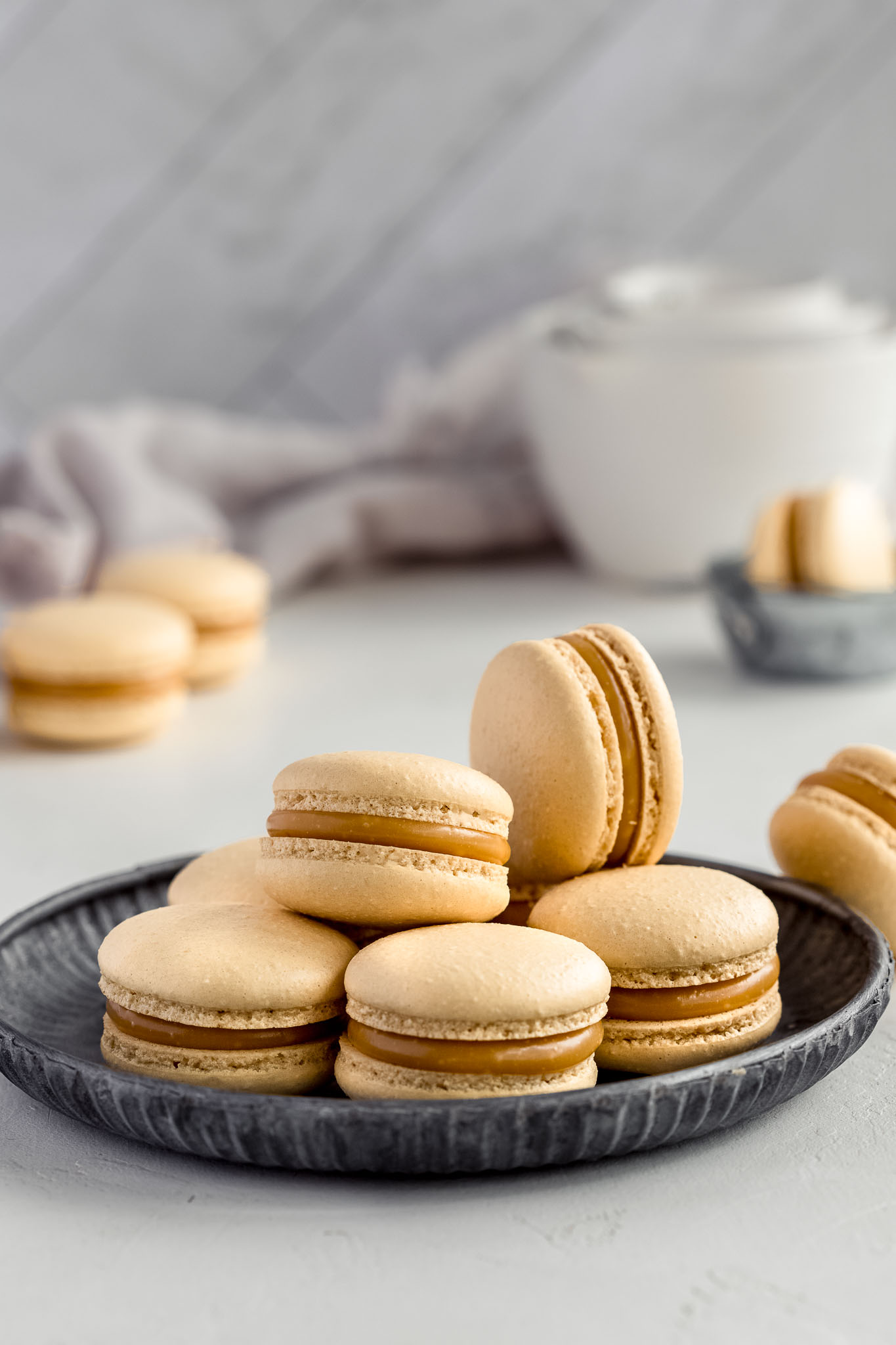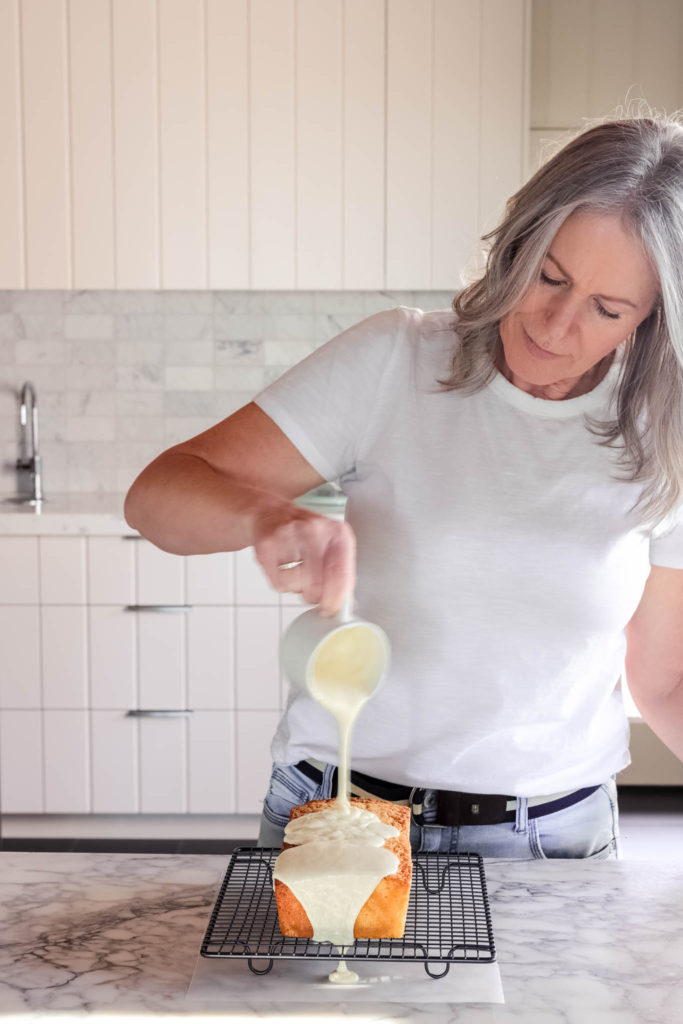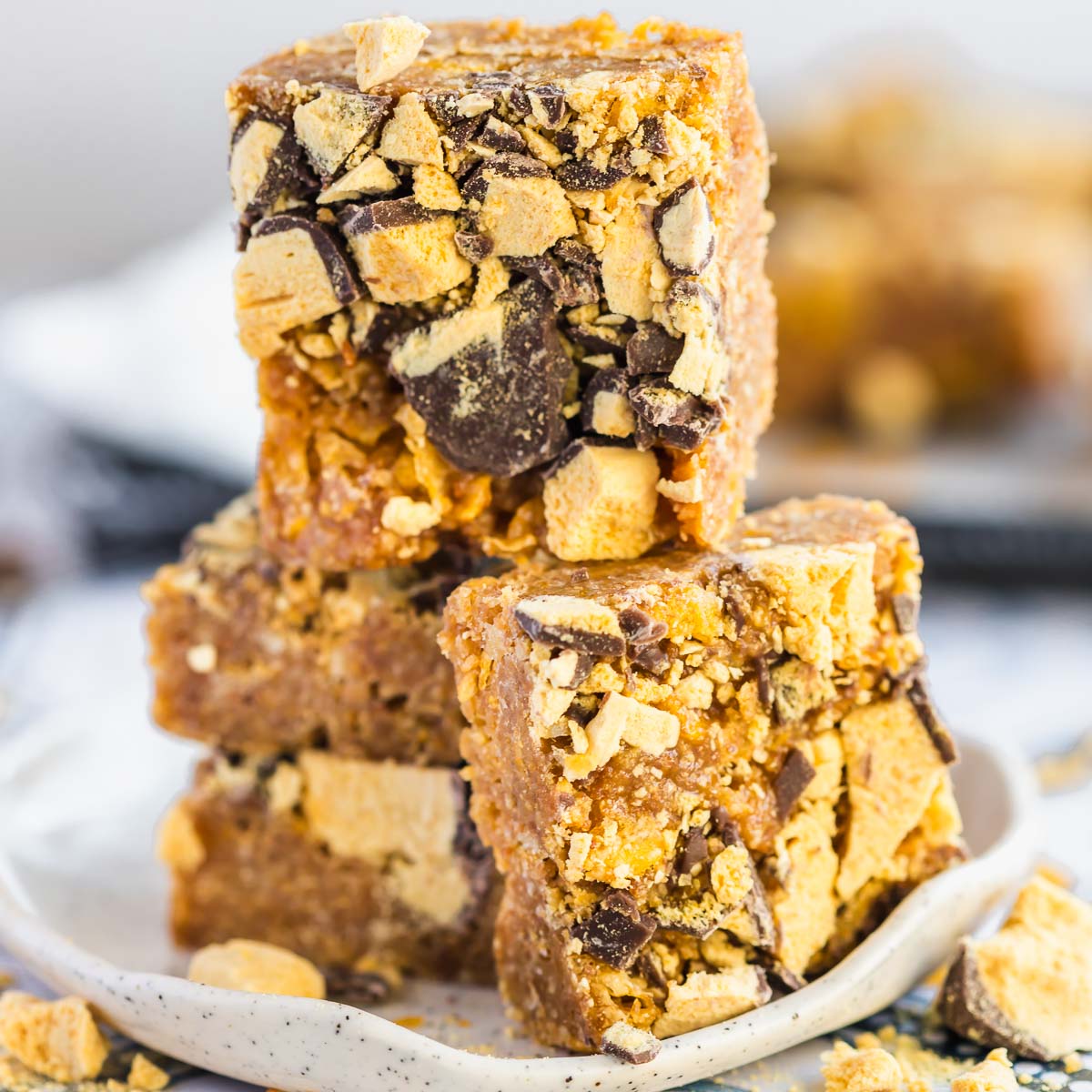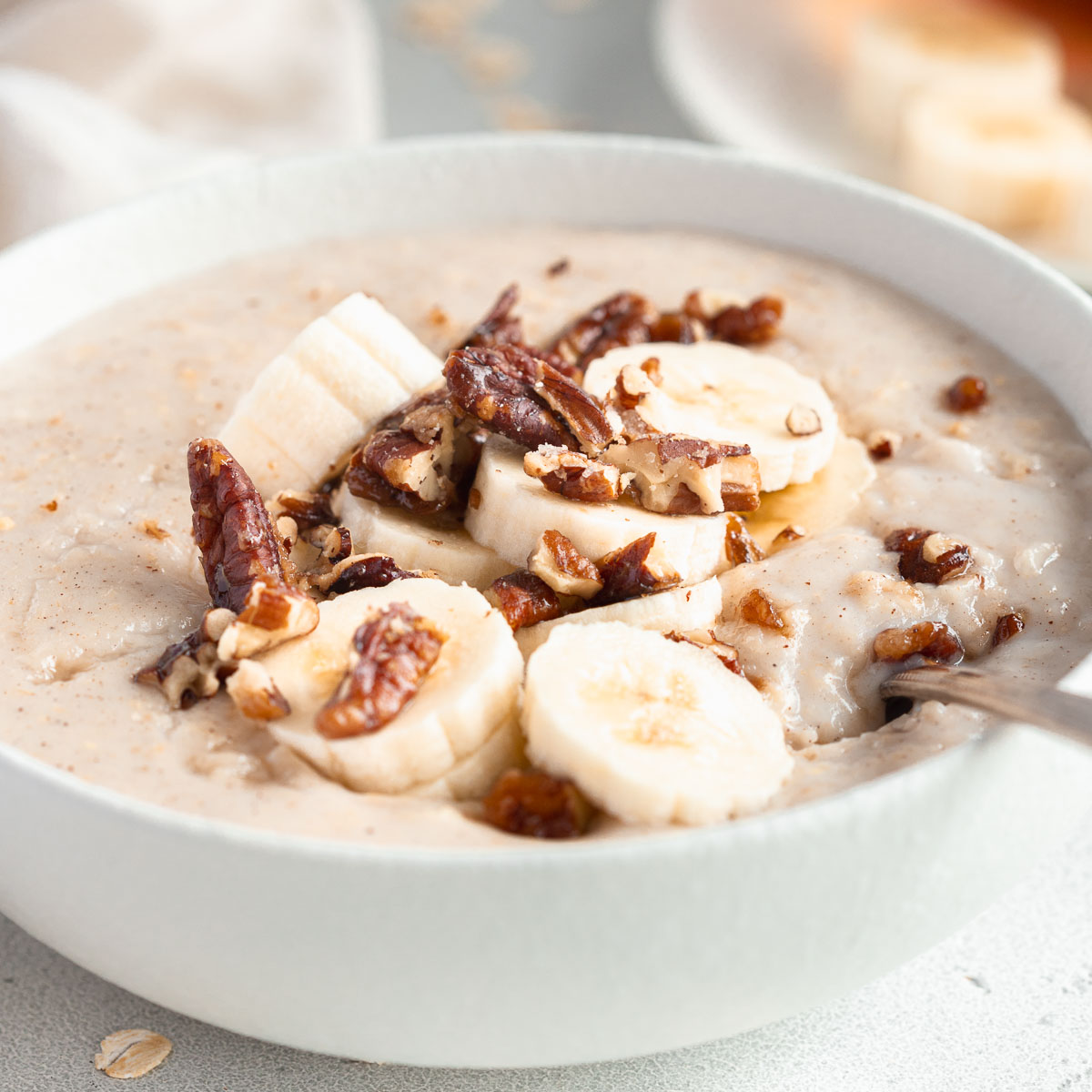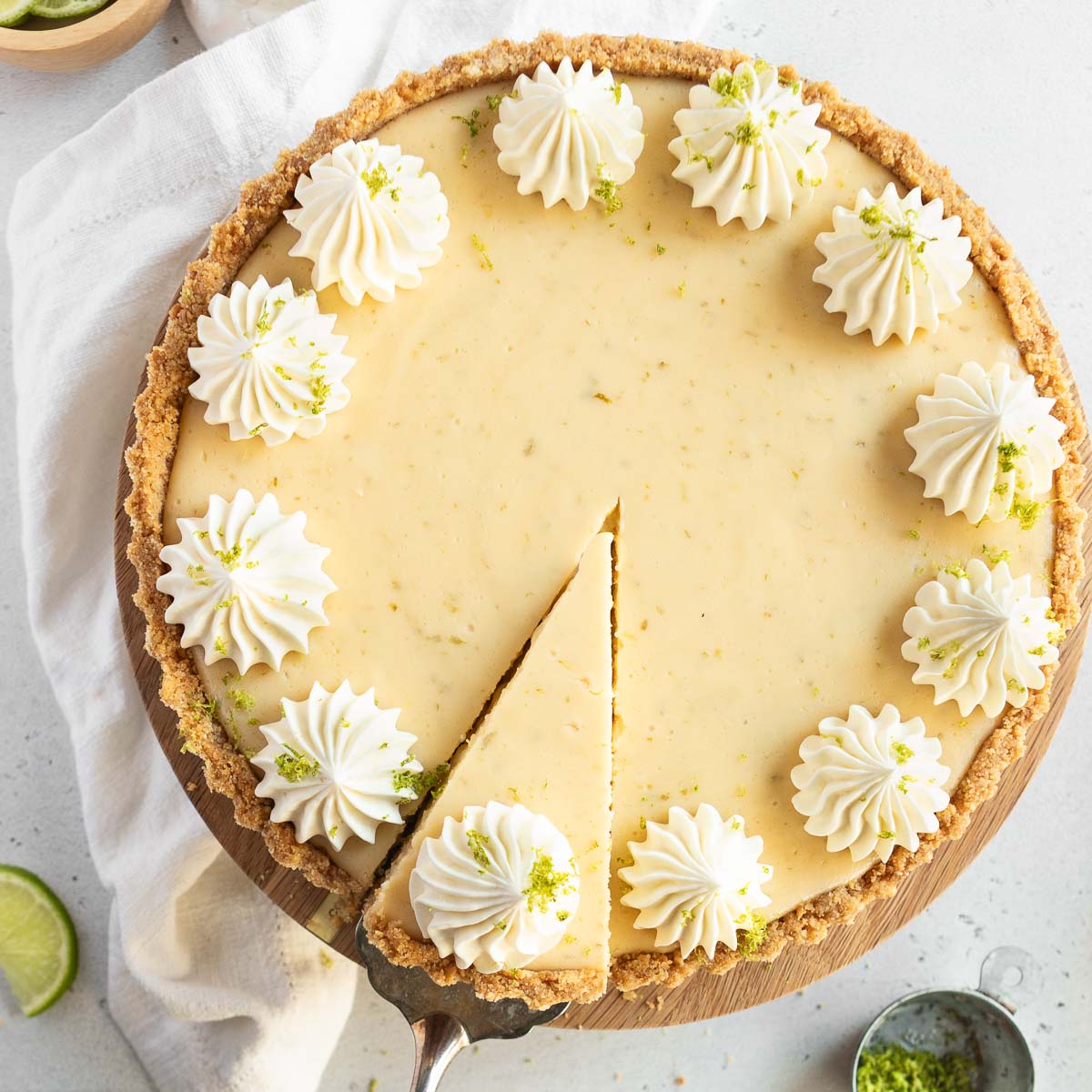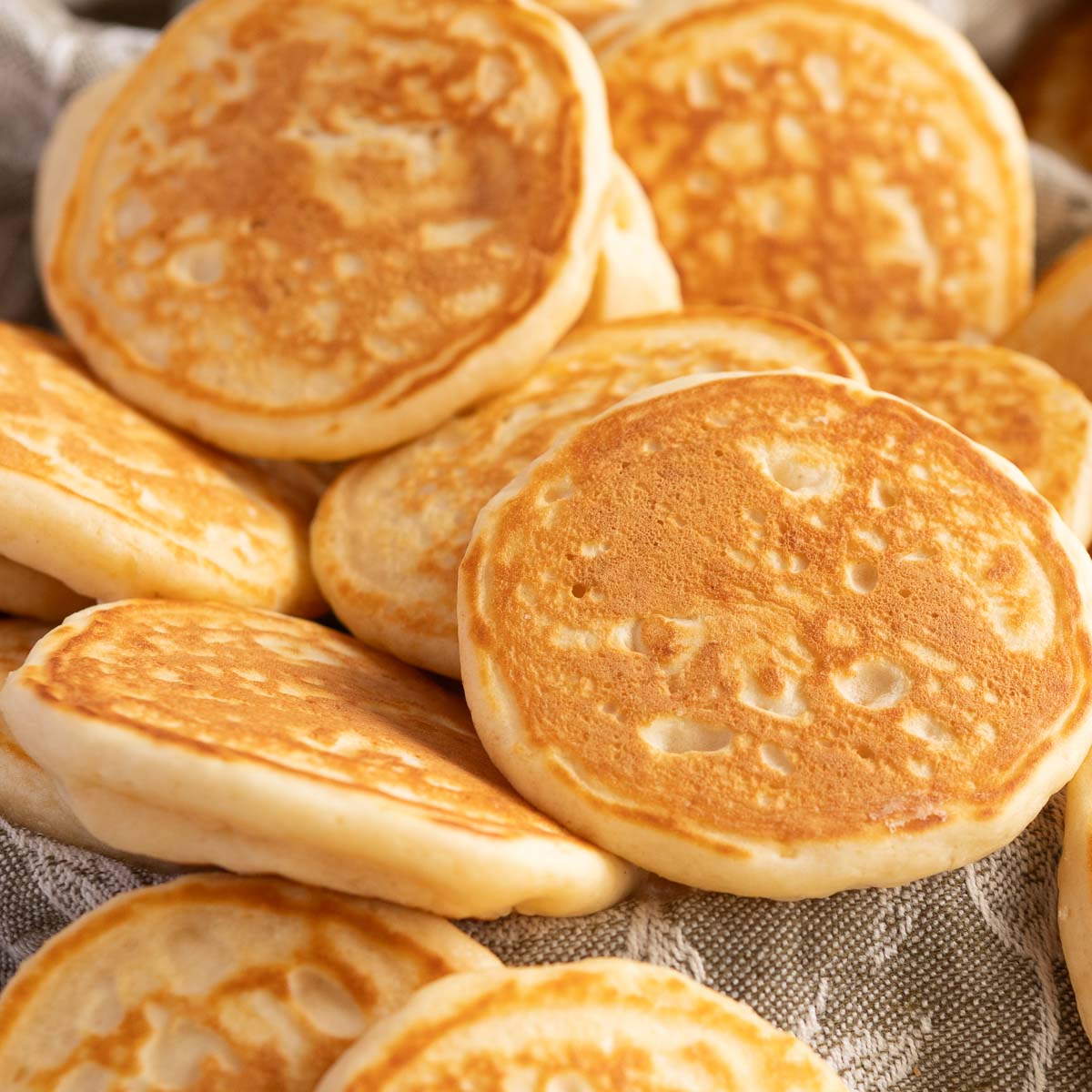Perfecting French Macarons
Fresh back from eating my way through France and I’m super keen to share my guide to Perfecting French Macarons with you! Now I’ve eaten a lot of Macarons over the past 15 years, which has included 4 trips to Paris, eating some of the world’s best Macarons. And while I’ve been inspired every time, I still love my Macarons the best! That’s a HUGE call, I know, but I’ve been practicing for a long time. And I had plenty of failures at the start. But I persevered, took some amazing, hands-on Macaron classes and did a LOT of research (by way of eating!). And to tell you the truth, once you have a really good recipe, the right tools and the know how, they’re actually really easy. I’ve made this post all about Perfecting French Macaron shells, so let’s get started…
Accuracy
Perfecting French Macarons starts with weighing your ingredients. Macarons are pretty simple, but a lot can go wrong if the ratios are out. Get yourself a set of digital scales -it will make life so much easier and will result in perfect Macarons!
French Macaron Terms
Tant pour tant: A French term meaning “equal parts,” is the magical combination of almond meal and icing sugar that forms the base of your macaron shells. Pulse them together in a food processor until finely blended, for beautifully smooth macaron shells.
Macaronage: The method of mixing or kneading the macaron batter until it’s smooth and shiny is called macaronage. This is done with a silicone spatula. The folding of the batter releases the oils from the almond meal, making the batter shiny -this is the “macaronner”. Be careful not to overmix, as it will make the macaronner too runny. You want the batter to ribbon off the spatula and be able to form a figure 8 without breaking.
Croûtage: This is French for crusting and refers to the drying or resting of the macaron shells. Croûtage prevents cracking in the shells and helps gives macarons their pretty little “feet”. I usually rest my shells for 30 minutes and will touch test them, to make sure they’re no longer sticky.
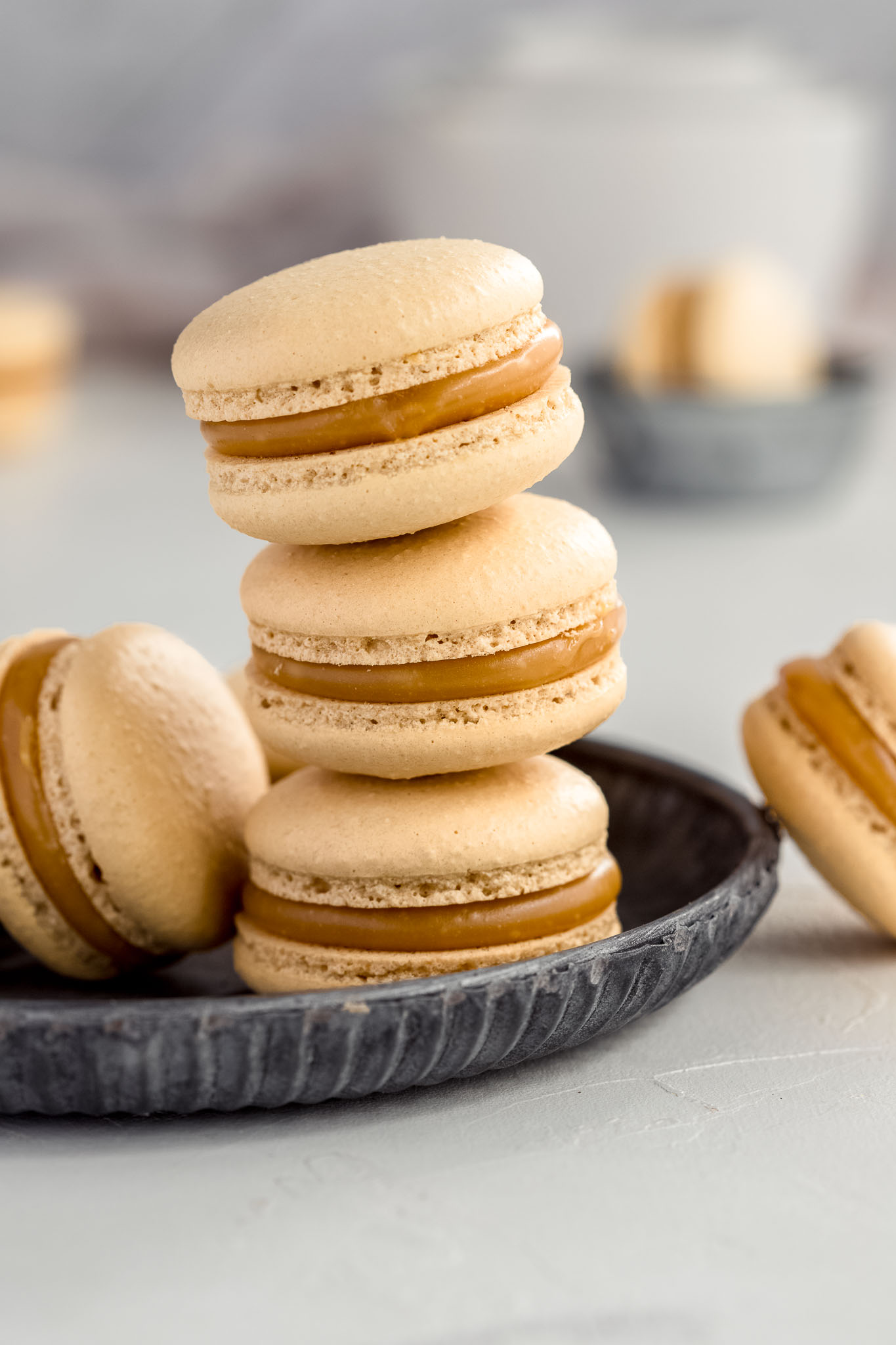
The French Meringue in Macarons
French Meringue is the heart of your macaron shells. In a spotlessly clean bowl, whip egg whites with a pinch of cream of tartar until soft peaks form. Gradually add caster sugar, one spoonful at a time, while continuing to whip. This very meringue is the same one I use for my Giant Meringue Cookies and Pavlovas. It’s super easy, perfectly stable and will give you beautifully delicate French Macarons.
Colouring Your Macaron Shells
I use gel food colouring to colour the French Meringue, before combining it with the Tant Pour Tant. Adding it to the meringue ensures an even distribution of colour, as it will then be thoroughly mixed through the tant pour tant during macaronage. I always add more colour than I think I need, as it will be diluted once added to the almond meal and icing sugar.
Combining the Meringue and Tant Pour Tant
Gently but firmly fold the meringue into the tant pour tant mixture. This step is crucial for achieving that signature macaron texture – smooth, shiny, and slightly runny. Don’t rush; patience is key. The batter should flow off your spatula in a ribbon-like manner and be able to form a figure 8 without breaking. This is the point where the mixture is ready to be piped.
How to Pipe Macarons
Fill a disposable piping bag fitted with a 1A nozzle with your Macaron batter. Line a baking sheet with a Silpat Macaron mat. These mats have circle guides, making it easier to space your Macarons. Make sure the filled piping bag is twisted at the end, so no batter can escape, and that there are no air bubbles inside the bag. Hold the bag upright, with the nozzle pointing directly down and squeeze gently with the hand holding the twisted end of the bag. Pipe to the inside of the marked circles on the silpat mat, release the pressure and give the bag and nozzle a little flick to stop the batter. I never pipe to the edge of the circle, as the batter will spread and inevitably join with the other shells.
Release Air Bubbles
Once piped, give the trays a gentle but firm tap on the kitchen bench or table, to get rid of any large air pockets (you can pierce any leftovers with a toothpick). Warning: place a tea towel on the bench beforehand to avoid chipping your stone bench (speaking from experience!)
Use Good Quality Tools
Using good quality baking sheets and macaron silpat mats with circle templates ensures even baking and perfectly shaped macarons. Unlike parchment paper, these tools offer consistent heat distribution, resulting in evenly risen and uniformly shaped shells.

Understanding Different Types of Meringues
French, Italian, and Swiss meringues are the three main types used in macarons. French meringue, like in this recipe, is the simplest – just whipped egg whites and sugar. Italian meringue involves adding hot sugar syrup to egg whites for stability, while Swiss meringue is heated over a double boiler before whipping. Each brings its unique texture and characteristics to your macarons, however I find the French Meringue the easiest and best for me. It gives me perfect Macarons every single time!
Flavouring Your Macarons
Did you know that most macaron shells are flavoured the same? They start with the same base shell; it’s the fillings that give them their flavour. So be sure to play with fillings -just add food colour to your shells to match the flavour! To make chocolate macarons, replace 20g of icing sugar with cocoa powder in your tant pour tant mixture. For fillings, the possibilities are endless – from silky ganaches and velvety salted caramel to vibrant fruit coulis and luscious buttercreams.
Troubleshooting Common Macaron Fails
- Cracked Tops: Ensure your meringue is properly folded into the tant pour tant. Overmixing can lead to cracked shells.
- Hollow Shells: This is often due to overmixing the batter or not tapping out air bubbles before baking. Gently tap the baking sheet on the counter to release trapped air.
- Uneven Feet: Uneven feet or no feet at all may result from improper folding, low oven temperature, or unevenly sized macarons. Use a template and ensure uniform piping. And know your oven -is it running too hot or too cold?
- Sticky Shells: If your macarons are sticky after baking, they might be underbaked. Extend the baking time slightly and check that the shells no longer wriggle on the mat.
- Misshapen Macarons: Piping technique matters. Hold the piping bag straight and maintain consistent pressure for even shells.
- Peaks: The batter wasn’t mixed enough and was too stiff. Make sure the batter reaches that ribbon stage, where it ribbons off your spatula and can form a figure 8.

Now that I’ve shared all my secrets to perfecting French macarons, it’s time to create your own flavours and combinations. I have lots on the blog, so be sure to check out some of my favourites:
Most of my Macaron recipes in the past have been with Italian Meringue, but you can swap it out for French Meringue, which is much easier!
Remember, it may take a little piping practice when it comes to perfecting you Macarons, but it’s so worth it!
Happy baking, and may your macarons always be delicious!

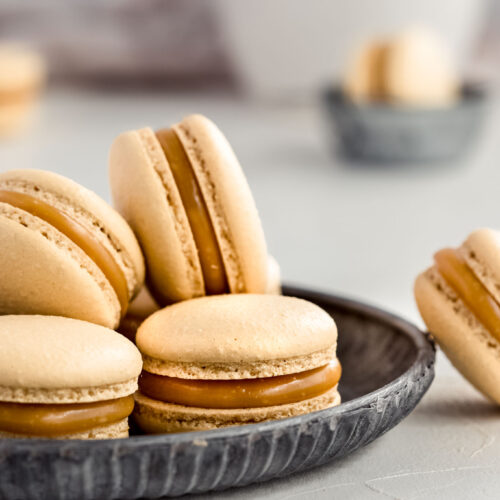
French Macarons
Equipment
- 2-4 Baking Trays I pipe all of my shells at once, so I use 4 trays
- 2-4 Silpat Macaron Mats
Ingredients
Macarons
- 135 g almond meal
- 135 g icing sugar (powdered sugar)
- 90 g caster (superfine) sugar
- 4 g cream of tartar optional
- 100 g egg whites you’ll need approx 3 room temperature eggs
- 6 Drops gel food colour
Filling
- 300 g ganache, buttercream or salted caramel 1-2 cups
Instructions
Macarons
- Place the almond meal and icing sugar in a food processor and blitz until well combined and there are no visible lumps. If you're using almond flour, just go ahead and sift it 3 times with the icing sugar
- Place the egg whites and optional cream of tartar into a clean stand mixer mixing bowl. Use the whisk attachment to whisk on low-medium until frothy
- Gradually add the caster sugar, 1 tablespoon at a time. Mix for 30 seconds until adding the next spoonful. After adding the last spoonful, continue to whisk on medium-high for another 5 minutes. Mixture should be thick and glossy
- Add the food colour and whisk again to combine
- Remove the bowl from the mixer, then add the almond meal mixture. Use a large silicone spatula to fold the mixture through. Continue to fold the mixture until it is glossy and can form a smooth ribbon figure 8. The figure 8 should slowly melt back into the rest of the mixture -the batter is now ready to pipe
- Place a macaron mat onto each of the baking sheets and set aside
- Place a 1cm round piping tip into a large piping bag. Twist the the bag and tip to stop the mixture coming out when you pour it into the bag. Place the bag into a tall narrow jug or cup and fold the ends of the bag over to open the bag. Pour the batter into the bag
- Pipe small circles onto the tray, to about ⅔ to filling the circles on the mat. I count to 2, then twist and flick the piping bag
- Once the shells have all been piped, gently tap the trays onto a covered bench. Rotate the tray to tap both sides. Use a toothpick to pop any remaining holes, then set the trays aside to rest for 30 minutes
- While the shells are resting, heat the oven to 150°C or 300° conventional. If using a fan oven, reduce the temperature to 135°
- Bake the macarons for 15-18 minutes. Check after 15 minutes -before removing them from the oven, check one of the middle macarons by giving it a wriggle. If it clearly wriggles, give it another 2-3 minutes of baking.
- Once baked, slide the silpat macaron mats onto a bench and leave to cool completely, before gently lifting them from the mat. Match up even macaron shells and place into pairs
Filling
- Place the filling into a disposable piping bag, fitted with a large star or circle tip.
- Pipe the filling onto the underside of half of the macaron shells, sandwiching them together with their matching half
- Macarons are best served the next day, to allow the flavors to absorb and the shells to become chewy. They are best stored in the fridge for 3-4 days or in the freezer for 3 months.
Save this recipe 💌

